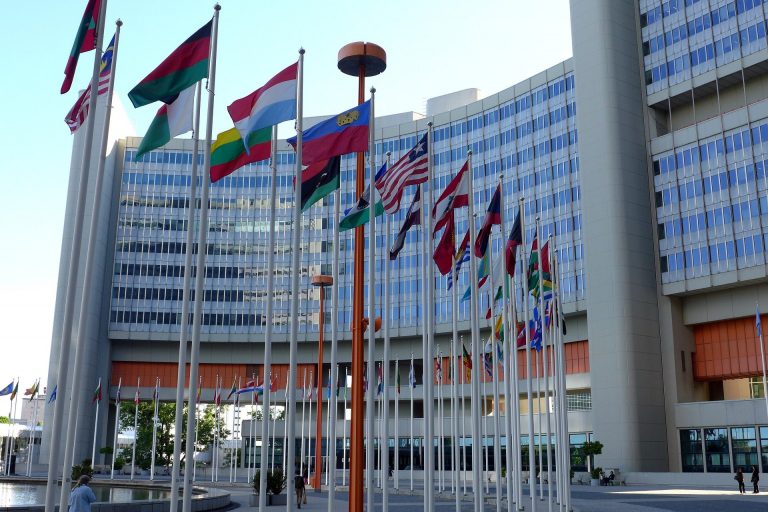In 1870s, Khedive Ismail Pasha of Egypt ordered his Chief of Staff, William Wing Loring, to invade Ethiopia and annex the Abbay river basin for the Khedivate crown. This followed the successful annexation of Sanjak of Habesh in 1866, which precipitated the dissolution of the Ottoman Habesh Eyalet that occurred in 1869. With the Sanjak providing a beachhead that allowed for lodgement of Egyptian troops in Keren and Massawa, the Khedive expected the inland expedition into the heartland of Ethiopia to be easy. It was not to be.
This plan to control the Blue Nile was thwarted by the Tigrayan trio of Emperor Yohannes IV, Ras Woldemichael Solomon, and Ras Alula “Abba Nega” Engida. The trio defeated the Khedivate imperial campaign at Gura in 1876. For Ethiopia, this victory was a testament to its robust defensive realism, while for Egypt, it invalidated its offensive realism besides angering the European creditors who financed the campaign. For Egypt, what was worse was that the Egyptian army had been trained and commanded by Americans and Europeans.
The defeat of the Egyptian army at the hands of Ethiopians ended Egyptian plans to militarily conquer Ethiopia and earned Ras Engida the moniker “Garibaldi of Abyssinia”. For Egypt, the plans to colonize lands in the Upper Nile basin – that now form the nations of Sudan, Ethiopia, Eritrea, Uganda, Kenya, South Sudan, and the Democratic Republic of Congo – were shelved. The Kellogg-Briand Pact and Stimson Doctrine proscribed the acceptability of conquest of sovereign nations, further closing the doors to Egypt’s ambitions of ever conquering Ethiopia. So, how would Egypt promote its water interests which are dependent on the uninterruptible flow of the River Nile?
A New Strategy
In the 1950s, a new (censurable) strategy was devised by Egypt to preserve its hydrological interests. This strategy can be surmised as follows:
Ethiopia must be prevented from developing the Abbay river basin. This is to be achieved using a combination of hostile diplomacy and instigation of internal instability – including fomenting Somali irredentism and domestic rebellions – so that priceless and irreplaceable resources are spent on wars rather than hydrological and agricultural developments.
To date, River Nile is key to Egypt’s survival, and this can make Egypt-Ethiopia contention over the shared Nile waters a zero-sum game. To drive the point home, most population centers in Egypt are found along the basin of the Nile River, and they include Cairo, Giza, and Alexandria which together host an estimated 35.4 million out of 101 million Egyptians. Also, farming is done in the fertile Nile valley, and drop in water volume in the river does cause a corresponding decrease in the area of arable land. This explains Egypt’s alarming concerns over damming of waters in the upper Nile basin, especially damming of the Blue Nile which provides the largest share of streamflow to the waters that flow through the Nile valley.

GERD and Some Questions
Under Meles Zenawi, Ethiopia took advantage of the Arab Spring in Egypt to start building a large gravity dam on Abay River (the Blue Nile). This dam was initially called the Millenium Dam based on its nature as a megaproject that would have dual-use – irrigation and electricity generation; and whose impact would be to spur economic development and improve Ethiopia’s food security, while limiting flooding across the fertile plains of Western Ethiopia. Later, its name changed to the Grand Ethiopian Renaissance Dam (GERD). By the time Abdul Fatah al-Sisi had secured his authority in Egypt, GERD was a fait accompli. However, events in Ethiopia in 2020 threatened the stability of the nation and risked completion of GERD, as well as threatened the fate of its Millennium Reservoir. Most importantly, these events exposed Ethiopia to hostile diplomacy, accelerated the fissuring of ethnic cleavages, caused fracturing of the military, and worsened the putrescence of its domestic stability.
In 2020, Egyptians, Europeans, and Americans got an opportunity to turn the tables on Ethiopia, and they did this by exploiting the innovative offensive realism of the Tigray People’s Liberation Front (TPLF) to torpedo the poorly integrated defensive-offensive realism of the Ethiopian Federal government. At times, Europeans and Americans ally, coordinate, and/or integrate their actions under the auspices of the North Atlantic Treaty Organization (NATO). Their collective actions have influenced the course of events in Ethiopia.
The sequence of events, and the cascade of human tragedies, which have happened since November 2020 raise the following questions:
- Will Egypt be able to inhibit large-scale water usage in the Abbay basin by fomenting instability in Ethiopia to keep it underdeveloped and weak?
- Will Egypt invade Ethiopia?
- Can Ethiopia survive as a unitary multiethnic nation-state, or is federalism the best option?
- How did the Tigray people come to be aligned with Egypt and the West against the Ethiopian Federal government?
- Is TPLF being supplied through Sudan? If yes, who are the suppliers, and what are the supplies (military and otherwise)?
- Is the withdrawal of ENDF from the Tigray region cause for TPLF to validate their realism and pragmatism as iustificationem per successus (justified by success)?
- Can Oromo and Tigray people secede from Ethiopia, and then establish viable nation-states?
- Can political Islam be wielded as a geostrategic tool to destabilize the upper Nile basin nations? Will Islamists exploit this to their advantage and play a double game that benefits them?
- Will Somali jihadism be empowered by American counter-terrorism strategies being exported to Eastern Africa? Will this Jihadism be masked as the Greater Somalia project to destabilize the entire region? In September 1960, Emperor Haile Selassie openly accused Egypt of promoting the idea of Greater Somalia, and later Mengistu HaileMariam denounced Egypt for arming Somali rebels during the Ethiopia-Somalia War in Ogaden. These accusations didn’t deter Anwar Sadat from arming Somalia, and in February 1978, the Kenyan Air Force did capture 20 tons of Egyptian weapons destined for Somalia. In May 1980, President Anwar Sadat proclaimed that “Somalia is an Arab country, and a member of the Arab League, (and) Egypt would not hesitate to send its troops to Somalia to fight beside the Somali people (against Ethiopia), if that were necessary”. Can Egypt now deploy its soldiers to any nation neighboring Ethiopia so as to fight against Ethiopia?
- Why has the Biden administration turned against Abiy’s government and compared it to the twilight of the Yugoslav republic (whose breakup was accelerated by the NATO bombing of Belgrade, Serbia, during Clinton’s tenure)? Both Clinton and Biden were elected on the Democratic Party ticket. Also, NATO’s unilateral campaign against Yugoslavia – called Operation Allied Force/Noble Anvil – was launched without the approval of the United Nations. Did the Biden Administration threaten to launch a similar NATO campaign against Ethiopia? Was the Ethiopian government forced by Western pressure to withdraw its troops from Mekelle and let TPLF occupy it in exchange for sanctions relief?
- Can Ethiopia win the information war being waged against it?
- When ENDF was defeated in Tigray in mid-2021, what were the options remaining for Abiy Ahmed? Seek a settlement with Tigray and anger his Amhara and Eritrean allies, or continue the war and devastate Amhara and Tigray?
- If Abiy lets Amahara and Tigray region be devastated, this raises another set of questions. What are Abiy’s real intentions? Could Abiy be setting up Amhara and Tigrayans to fight and weaken each other? Will this promote Oromo expansion which must take place before Oromo secession from Ethiopia?
- Who will abandon the other first? Will the Amhara seek rapprochement with the West or will Abiy seek support from the West by victimizing the Amhara?
- What about Eritrea? What value does Eritrea – a non-productive hermit nation – add to Ethiopia? Should Ethiopians let TPLF and Eritrea fight? Does Eritrea want to keep Ethiopia in a state of constant war?
- Eritrea made Abiy’s Ethiopia become a pariah. Should Ethiopia seek to restore good relations with Kenya while abandoning Eritrea?
- Most Ethiopian diasporas are in the West. What value do Russia and China add to Ethiopia? Should Ethiopians show gratitude to the Western nations that welcomed them and allowed them to prosper? Should Ethiopians push for better relations with the West, including support for American and European sanctions against Abiy’s government?
This multi-part series will use the geopolitical lenses of realism and pragmatism to make sense and give meaning to these problems, as well as attempt to answer the questions.
Offensive realism and its limits are explained in Offensive Realism and Foreign Policy.
A modified and redacted version of this post was published in the Medium page for Geopolitics Press.
The feature image is the lava lake of Erta Ale in Ethiopia, which was photographed by Marc Szeglat and shared on Unsplash








Just to let you know, when Alulua Aba Nega fought against Egyptians, the fighters they used were from Gojam, Amhara fighters.
The Tigrai king Yohannes IV goes to war with a Gojam King, defeating him. This, Tigrays believe, somehow made Yohannes IV some ’emperor.’
When Atse Thedros united Ethiopia, in the 1860’s, Yohannes IV leads the British to Abyssinia, effectively severing ties with Tigrays, who at the time were more or less nomadic people.
Emperor Menelik, the rightful heir, had already been born, whom Atse Thedros raised.
How did Tigrays even conceive of reigning over Ethiopia using British powers? The British showed, it was possible to destroy a country using foreign powers, and then Italians got humiliated in Adwa, returning again thinking they can get revenge. The worst of Italian deeds happened between in 1895-1935.
Can’t wait to read your answers to all the questions you posed. It boggles the mind that a country like Egypt who sits on an ocean of a desert with no water source of its own could go to this extreme to force its will on Ethiopia. Ethiopia is blessed in every way and protected by God almighty, I hope you must have seen and realized this to be true from what is taking place!!!